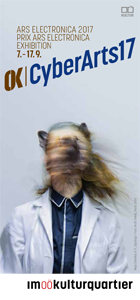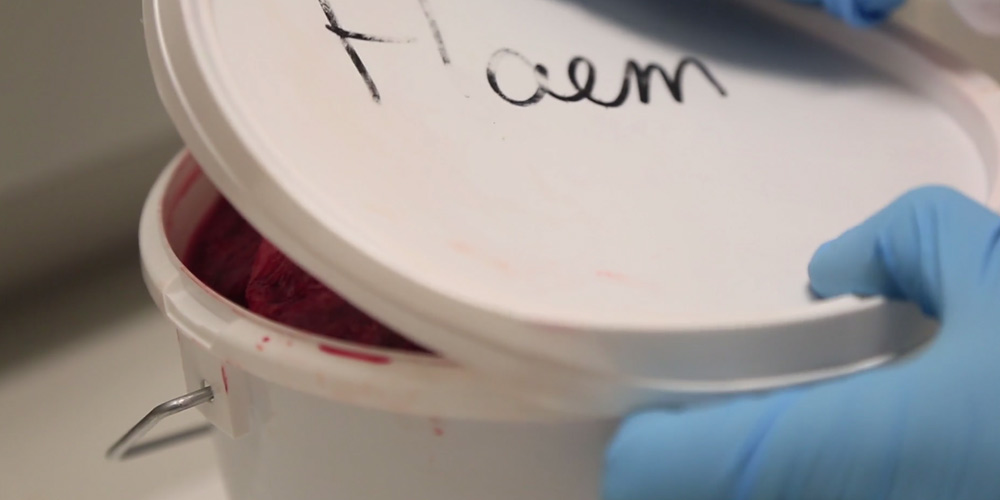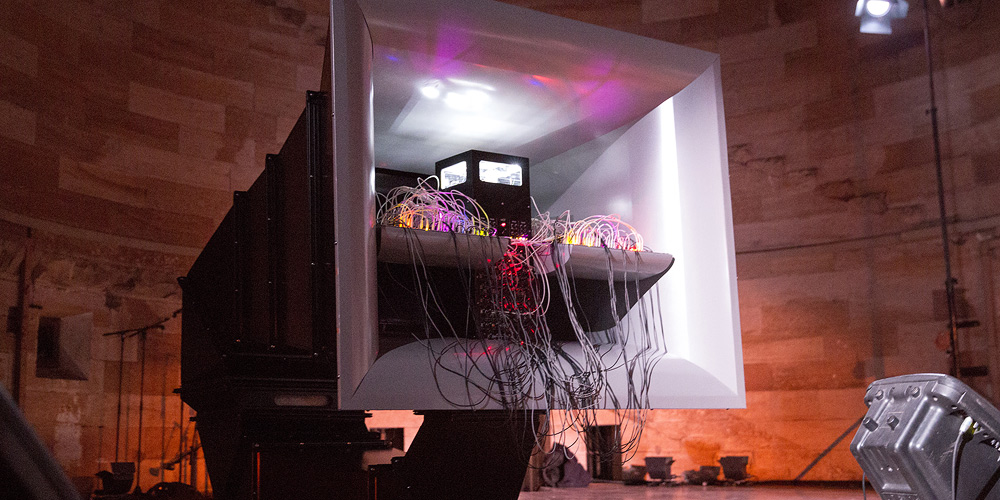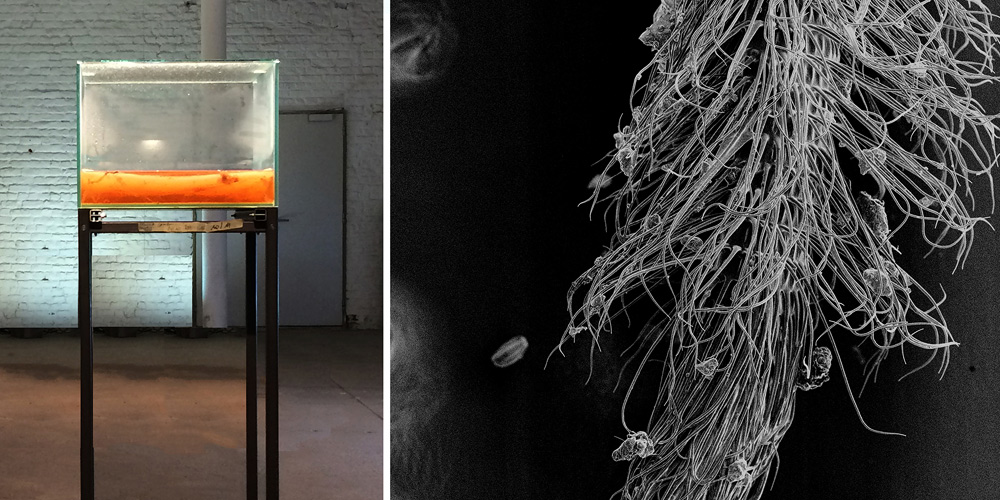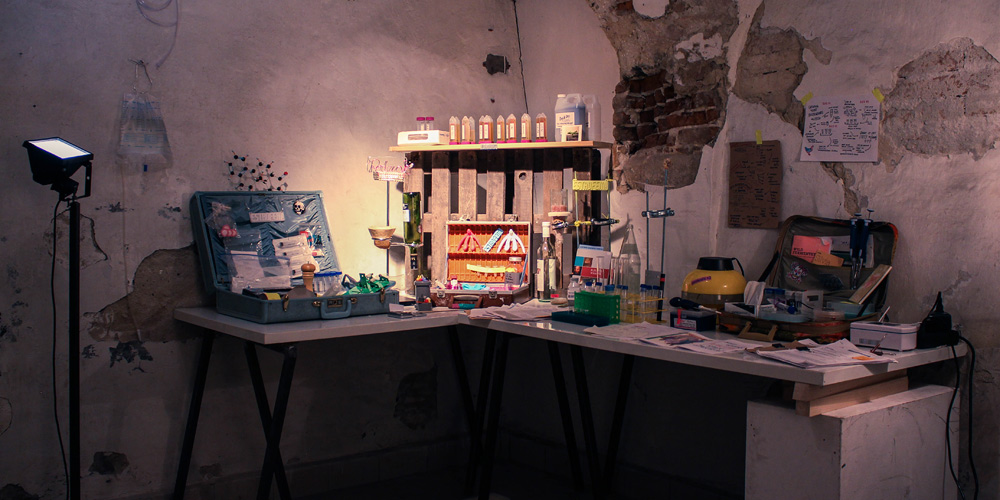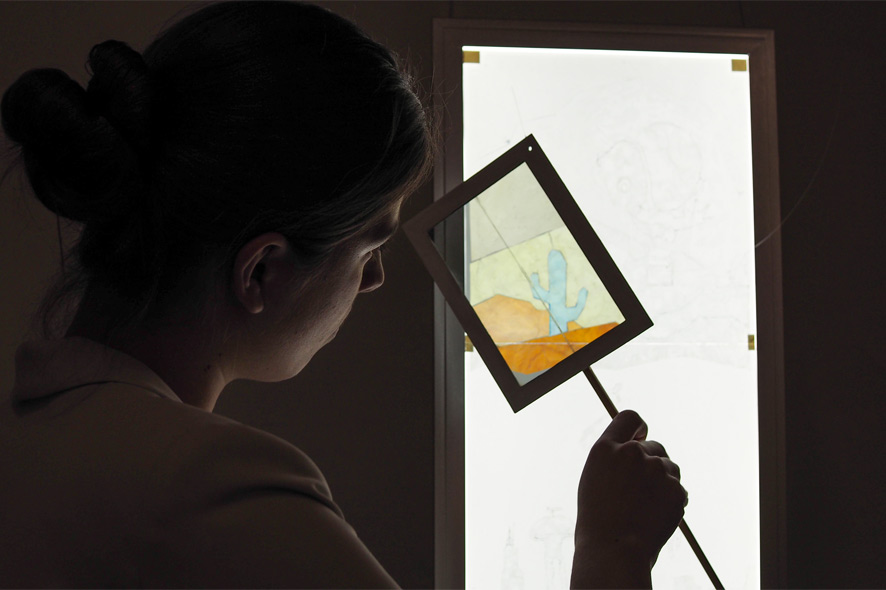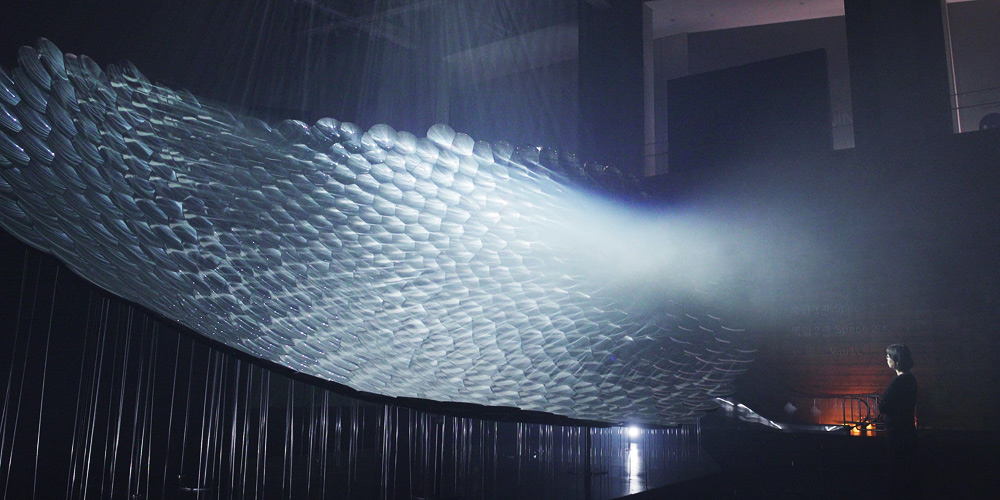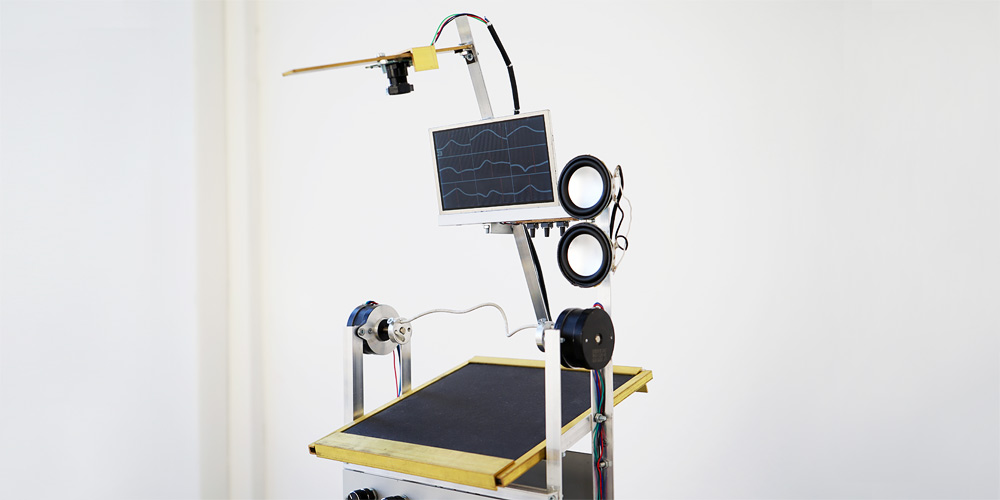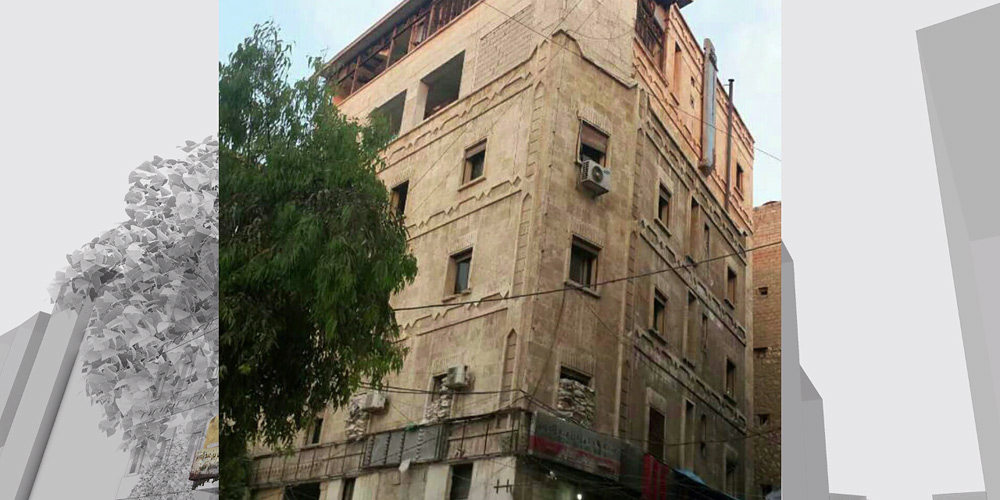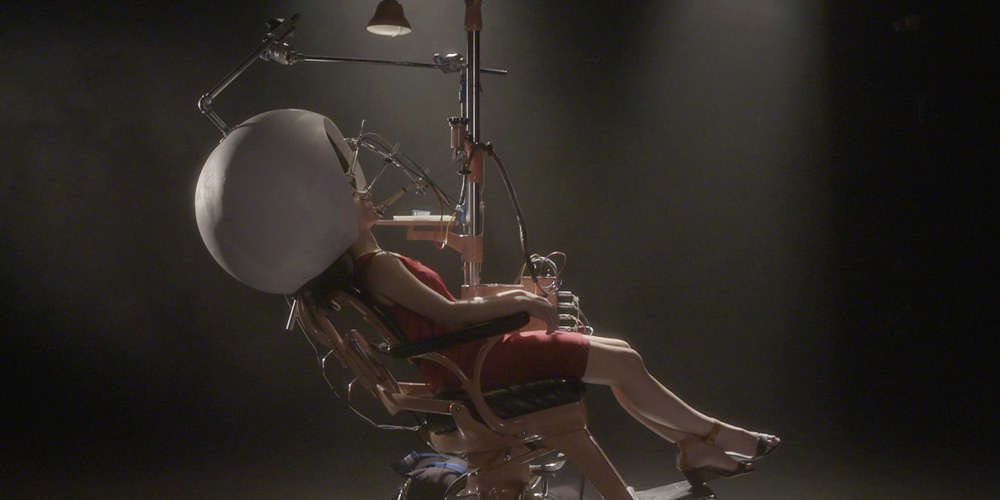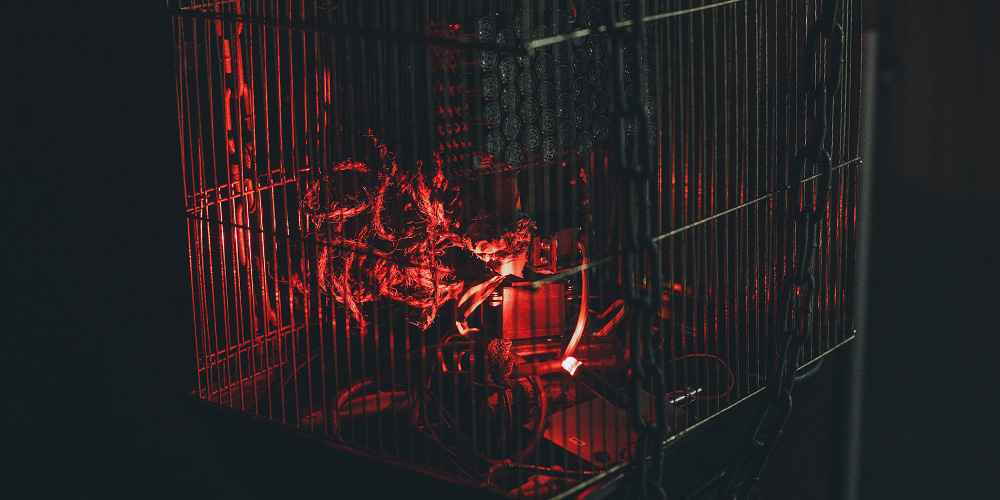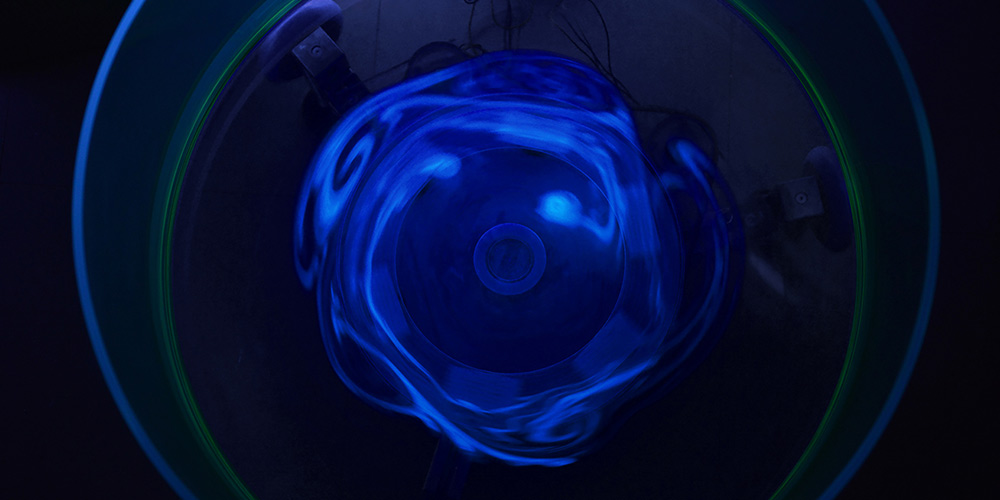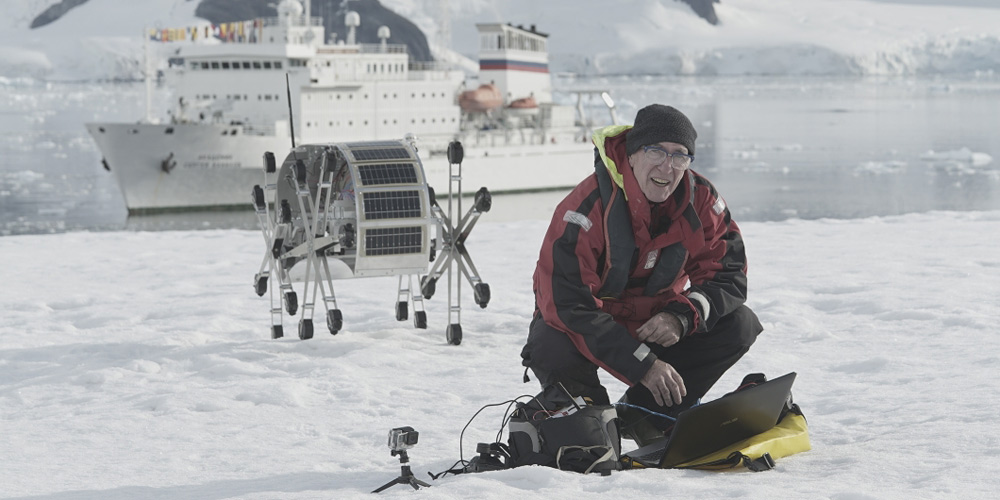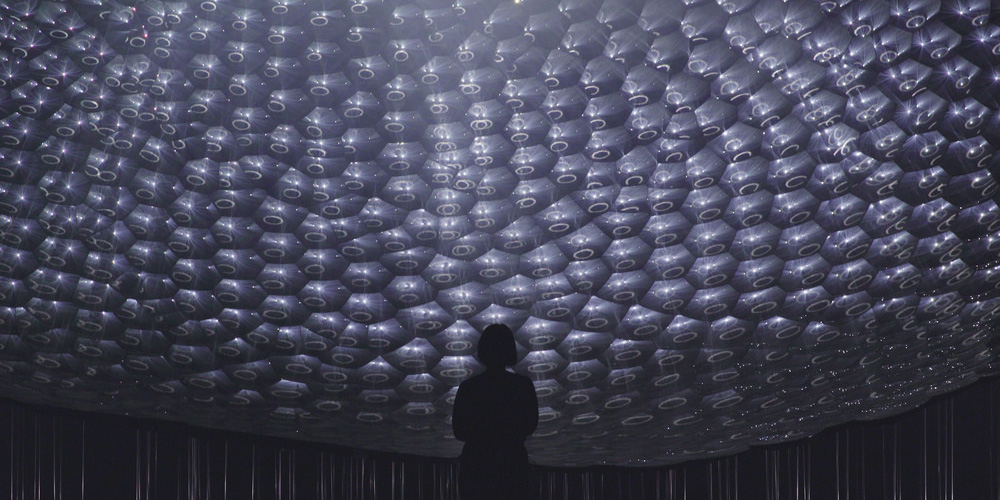
Credit: Elliot Woods, Mimi Son
Experience digital arts! CyberArts presents the most outstanding entries from the Prix Ars Electronica, the international competition of computer art, this year for the 20th time at the OK Center of Contemporary Art. This year’s exhibition shows award-winners and distinguished works from the categories Computer Animation/Film/VFX, Hybrid Art and Digital Musics & Sound Art. The intelligent and entertaining presentation impressively depicts the developments in digital art, the current discourse, and the associated issues. A variety of the latest computer animations, impressive film productions and visual effects will be shown at the five-day Ars Electronica Animation Festival at Movie 1. A special highlight is the legendary OK Night on Saturday September 9 th with the Electronic Theatre at the open- air-cinema, Live DJs, concerts and performances on the roof and in the OK Deck.
CyberArts 2017 Flyer
(PDF file, 0,5 MB)

What are we? Where do we come from and where are we going? Maja Smrekar’s artistic work revolves around these eternal questions of humanity. The work series K-9_topology, winner of the Golden Nica, consists of the four consecutive projects shown here, which each focus from different perspectives on the essence and the role of human beings and especially the role of a woman in increasingly tough bio political conditions of the present times.
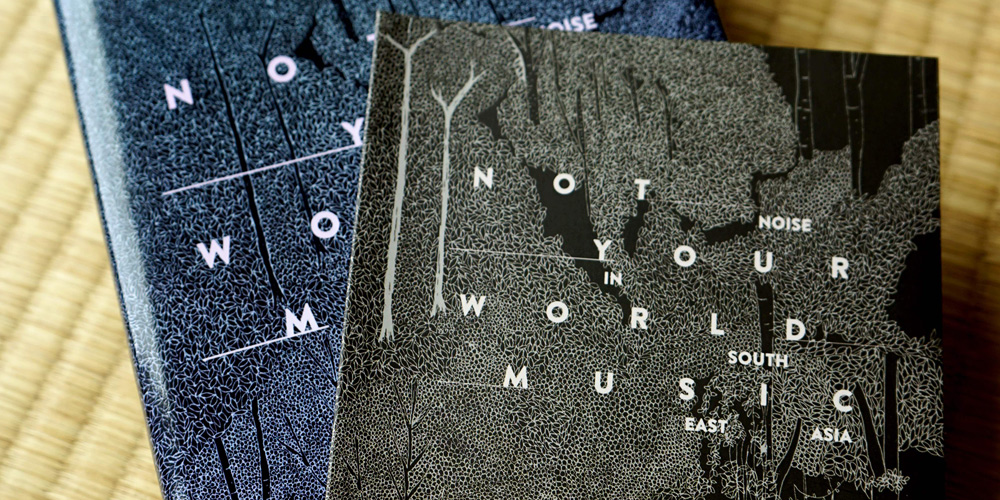
Not Your World Music is one of the few publications about contemporary noise* and industrial, electroacoustic and experimental music and sound art in South East Asia (Cambodia, Indonesia, Laos, Malaysia, Myanmar/Burma, the Philippines, Singapore, Thailand, Vietnam), and it is, by far, the most comprehensive published resource on noise music in South East Asia.
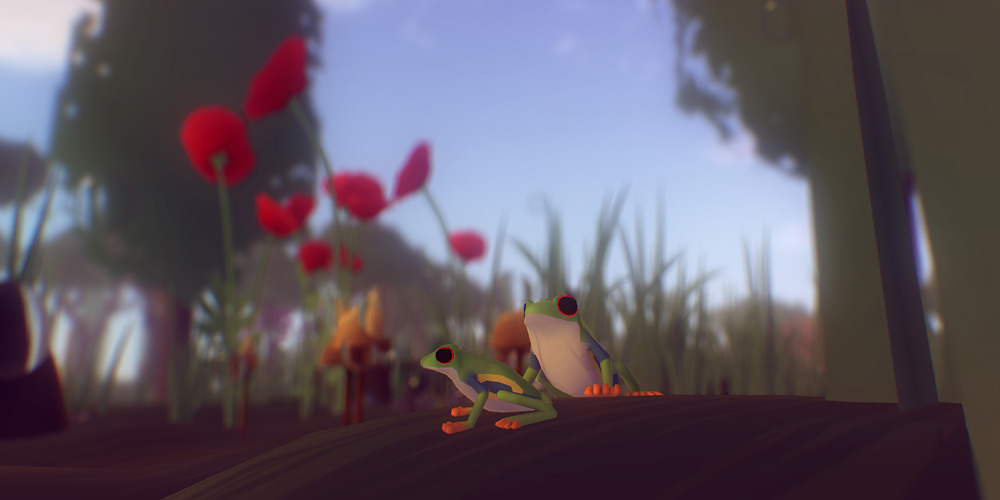
Everything is a “sandbox narrative computer game”: the course of the game is free, allowing players to explore the game universe on their own, and no game is like another. Everything you see here, you can be, so you can transform yourself into a ladybug, a plant, a microbe, or even an entire galaxy.

The artists Ruben Pater and the composer Gonçalo Freiria Cardoso are interested in the auditive dimension of military drones. In their project they emphasize the destructive aspects of this technology, calling attention to the negative psychological effects that inhabitants in areas of conflict are exposed to.
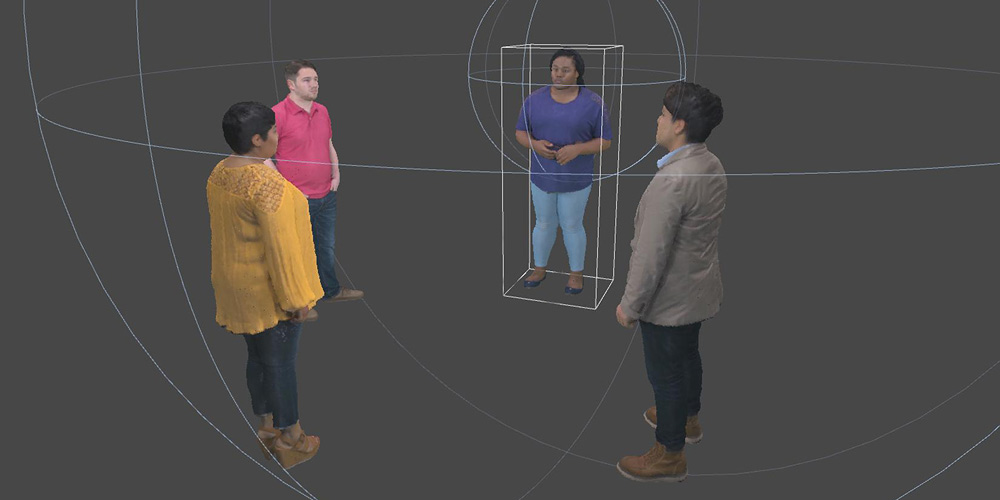
Out of Exile is an impressive virtual reality experience that deals with society’s negative attitude toward LGBTQ* youth. A boy named Daniel Ashley Pierce ends up in a heated conflict with his family due to his sexual orientation. Authentic audio recordings were used for the project, which Daniel recorded unnoticed during the actual argument.
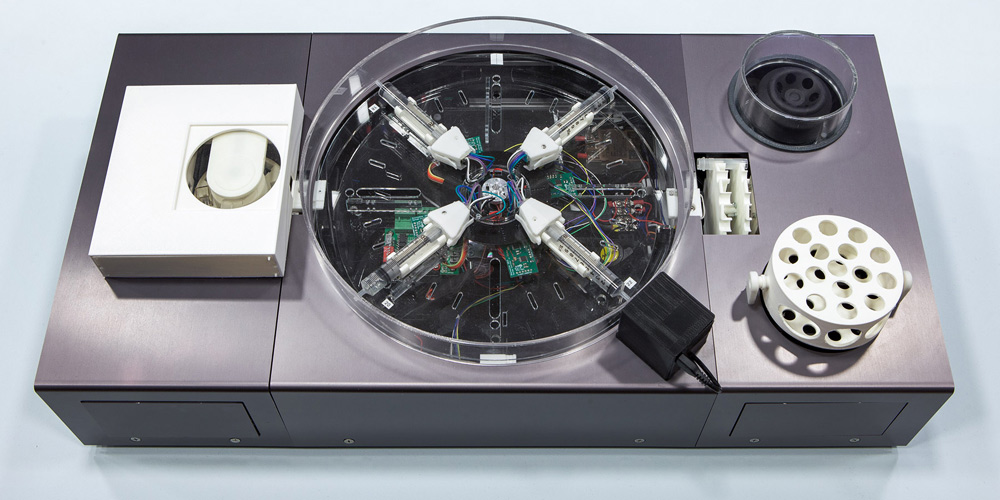
The Microbial Design Studio (MDS) was designed by researchers from the Design Class and the Biology Institute of the University of Pennsylvania with experts from industry. It is intended to allow laypeople to inform themselves about genetically modified organisms and the practices of transgenic design.
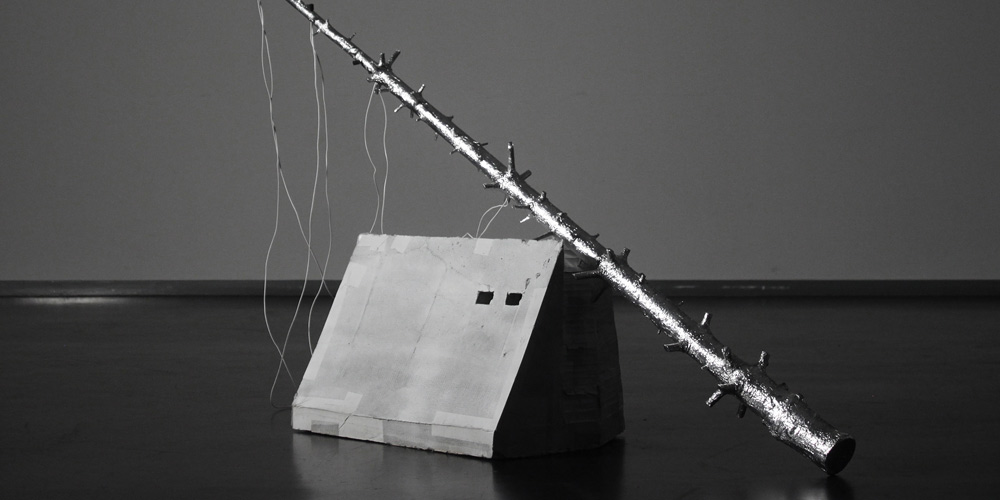
In his installation Wellenwald mit Bunker, David Ebner reflects on the digital age and the influence of new media. The installation consists of a spruce trunk that leans on an object made of concrete. The surface of the trunk is completely covered with aluminum foil. Antennae are mounted on this, which pick up waves from their surrounding.
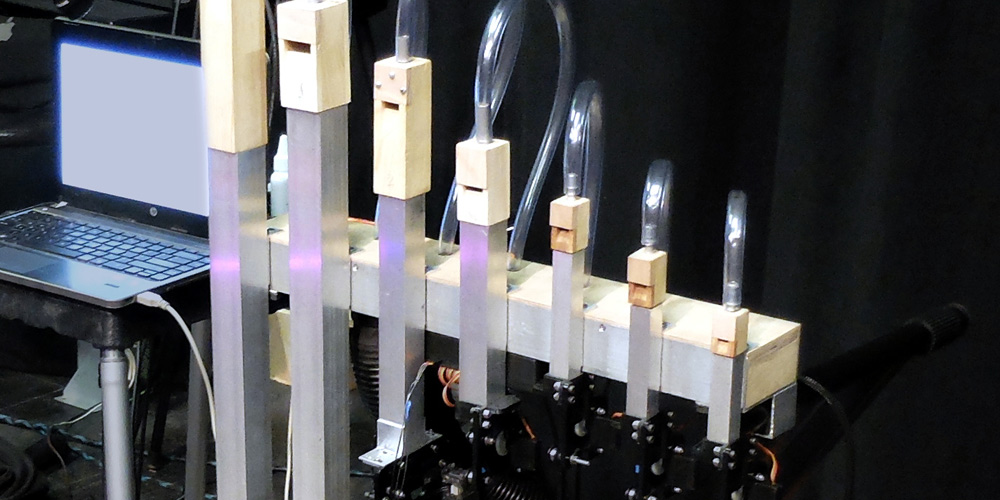
The Acoustic Additive Synthesizer (AAS) is an interactive object and instrument, which is based on the principles of a pipe organ. Pitch and volume, however, are controlled here by a computer. Each of the seven pipes has a motorized piston, which changes the pitch of the sound continuously, and a dedicated motorized air valve, which changes the volume of the sound.
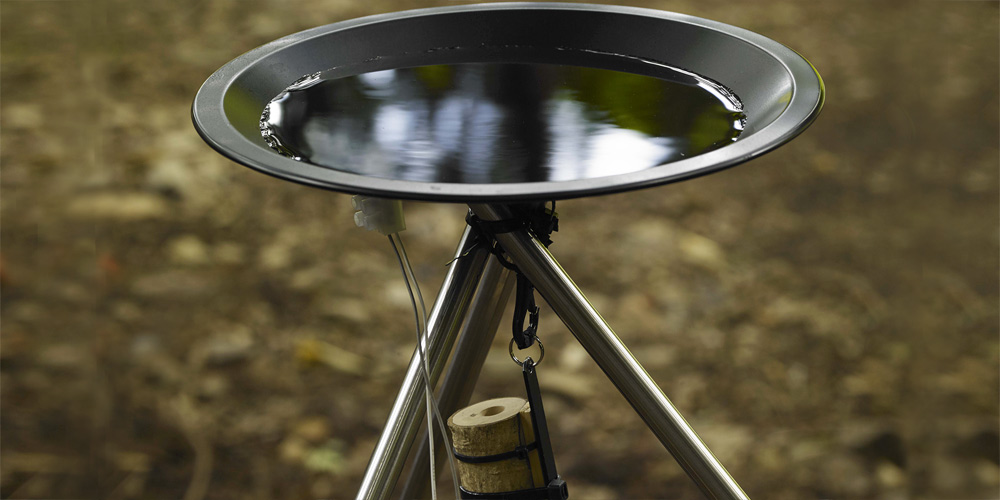
imaginary rhetoric is the final part of the series “blank projects,” in which the artists deals with the effects of extreme situations such as natural disasters and disasters caused by humans. The fourth work, shown here, was inspired by the artist’s excursions to Fukushima and other sites where nuclear disasters have occurred.
There are 24 million dogs in Mexico, of which 16.8 million (70%) are stray dogs. With this project Berenice Olmedo Peña critically questions our relationship to the canine species: on the one hand the cultivated domestic animal, “man’s best friend,” on the other hand the little appreciated, disrespectfully treated stray dog.
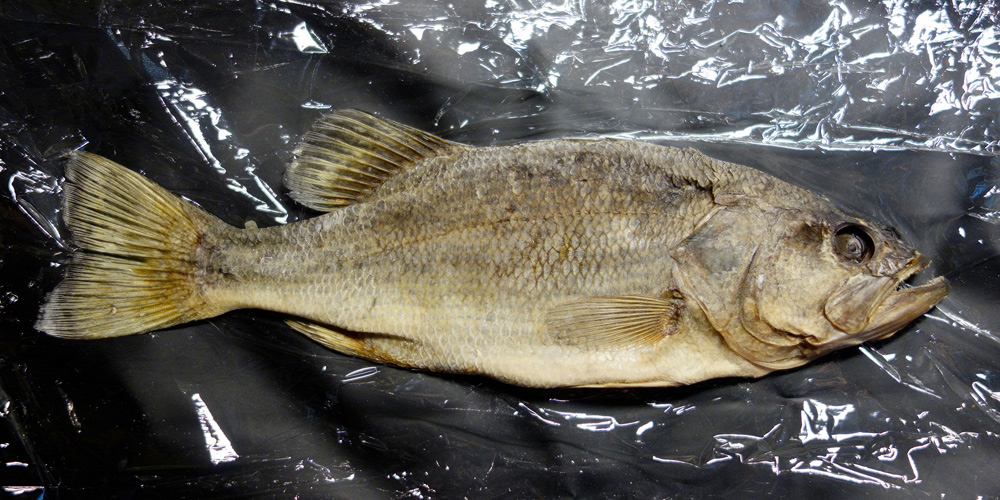
Since the nuclear disaster in Fukushima in 2011, the actual extent of the release of radioactive particles has been hotly debated. Over a period of five years photographer Masamichi Kagaya in cooperation with Satoshi Mori, scientist and professor, collected many different samples in the affected area – from daily necessities to flora and fauna – and developed a 3D autoradiograph.
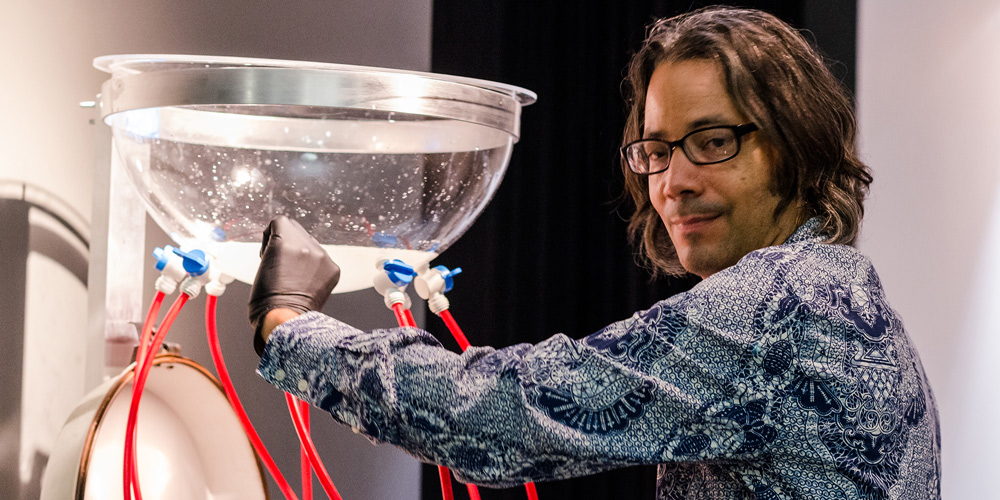
The America Project is a biotechnological art installation that produces a “collective genetic portrait.” For decades, DNA has been regarded as the sign of our individuality and identity. The artist applies the process of DNA gel electrophoresis to show that the DNA of humans is actually nearly identical.

